The Inner Harbor area features many attractions for visitors like us who were there for a conference. A short walk from our hotel is the National Acquarium, the large buildings shown in the opening photo. Dwarfed by the two buildings are two seagoing vessels that are a portion of the topic of this week’s Travel Tuesday post. The Lightship Chesapeake and the Submarine USS Torsk are two of the four vessels that are open for viewing for a small fee.
 The USS Torsk (SS-423) was built in the last days of World War II. For those interested in the specifics of the ship and its place in naval submarine design, Wikipedia has a large article that also includes the vessel’s service history. You can find that reference here.
The USS Torsk (SS-423) was built in the last days of World War II. For those interested in the specifics of the ship and its place in naval submarine design, Wikipedia has a large article that also includes the vessel’s service history. You can find that reference here.
 Submarines are as small and cramped as you can imagine, especially if you’ve seen movies such as “Run Silent, Run Deep” or “The Hunt for Red October.” Much of the ship is open to view, complete with the small hatchways between compartments. The forward torpedo tubes are visible, one with a torpedo partially loaded and the other conveniently lit to see the interior of the tube.
Submarines are as small and cramped as you can imagine, especially if you’ve seen movies such as “Run Silent, Run Deep” or “The Hunt for Red October.” Much of the ship is open to view, complete with the small hatchways between compartments. The forward torpedo tubes are visible, one with a torpedo partially loaded and the other conveniently lit to see the interior of the tube.
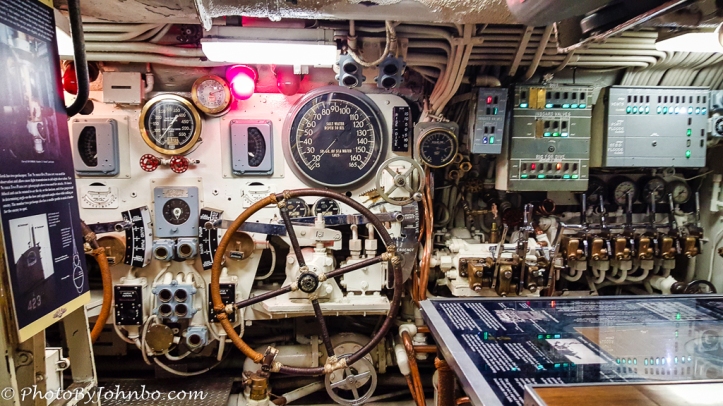 Placards posted throughout all of the ships provide plenty of information for self-guided tours. Not surprisingly, of the four ships open for touring, the submarine proved to be the most crowded when it came to visitors maneuvering about on their own while attempting to view the ship’s interior. Even so, patience and courtesy made for a pleasant tour. Time is not of the essence, unless you get there just before closing.
Placards posted throughout all of the ships provide plenty of information for self-guided tours. Not surprisingly, of the four ships open for touring, the submarine proved to be the most crowded when it came to visitors maneuvering about on their own while attempting to view the ship’s interior. Even so, patience and courtesy made for a pleasant tour. Time is not of the essence, unless you get there just before closing.
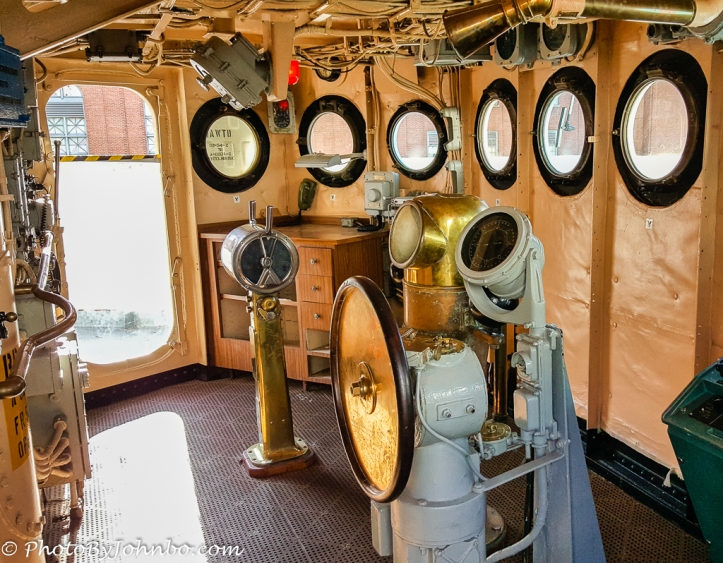 Prior to boarding the Coast Guard’s US Lightship Chesapeake (LV-116), I’d never heard of the concept of a light ship. I was to learn it is actually a floating lighthouse. Built in 1929, the ship went into lighthouse service, her name changing at each station she served, as was common for light ships to take on the name of the location currently being served. In 1939, all ships in the lightship fleet were transferred into the US Coast Guard and the crews became Coast Guard volunteers (or found other work.) Her last station was at the mouth of Delaware Bay from 1966 to 1970 where she was named DELAWARE. At one point, she served Chesapeake Bay and now carries that name from her assignment there. As technology advanced, lightships were replaced by automated buoys and by the early 1970’s, the fleet was mothballed. You can read more of the history of Chesapeake here.
Prior to boarding the Coast Guard’s US Lightship Chesapeake (LV-116), I’d never heard of the concept of a light ship. I was to learn it is actually a floating lighthouse. Built in 1929, the ship went into lighthouse service, her name changing at each station she served, as was common for light ships to take on the name of the location currently being served. In 1939, all ships in the lightship fleet were transferred into the US Coast Guard and the crews became Coast Guard volunteers (or found other work.) Her last station was at the mouth of Delaware Bay from 1966 to 1970 where she was named DELAWARE. At one point, she served Chesapeake Bay and now carries that name from her assignment there. As technology advanced, lightships were replaced by automated buoys and by the early 1970’s, the fleet was mothballed. You can read more of the history of Chesapeake here.
 My favorite ship to visit is the USS Constellation. Launched in 1855, the ship was the last sail-only warship in the naval fleet. Wikipedia references an interesting error in the ship’s reconstruction. There were two USS Constellations of similar class, one built in 1787 and this one built in 1854. Early reconstruction in the 1950’s and 1960’s modified her to represent the older design only to discover that design change was in error.
My favorite ship to visit is the USS Constellation. Launched in 1855, the ship was the last sail-only warship in the naval fleet. Wikipedia references an interesting error in the ship’s reconstruction. There were two USS Constellations of similar class, one built in 1787 and this one built in 1854. Early reconstruction in the 1950’s and 1960’s modified her to represent the older design only to discover that design change was in error.
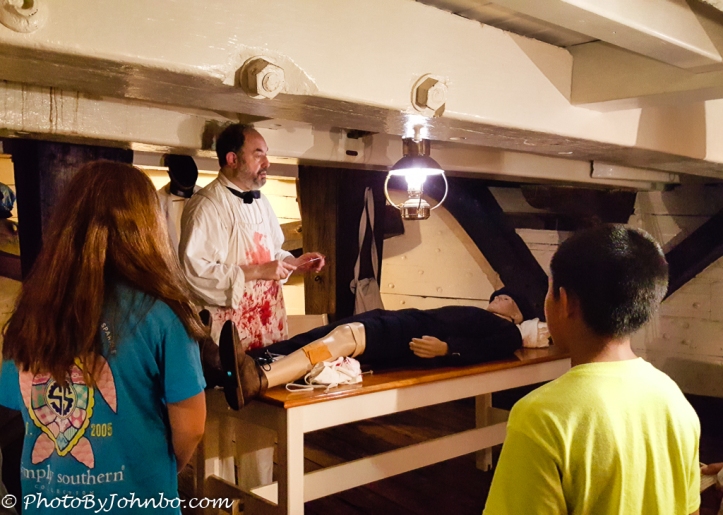 The large ship provided the most interesting tour if for no other reason that the size of the ship allowed for many more guests and for docents to take on roles as part of the ship’s crew where presentations about life on board this sailing warship are presented throughout the day.
The large ship provided the most interesting tour if for no other reason that the size of the ship allowed for many more guests and for docents to take on roles as part of the ship’s crew where presentations about life on board this sailing warship are presented throughout the day.
 The ship was armed well. Though the reconstruction features obviously plastic cannon, there is one cannon on deck that is fired regularly on schedule. We happened to be on board at the appropriate time to hear the big gun fire. You can read more of the ship’s history here.
The ship was armed well. Though the reconstruction features obviously plastic cannon, there is one cannon on deck that is fired regularly on schedule. We happened to be on board at the appropriate time to hear the big gun fire. You can read more of the ship’s history here.
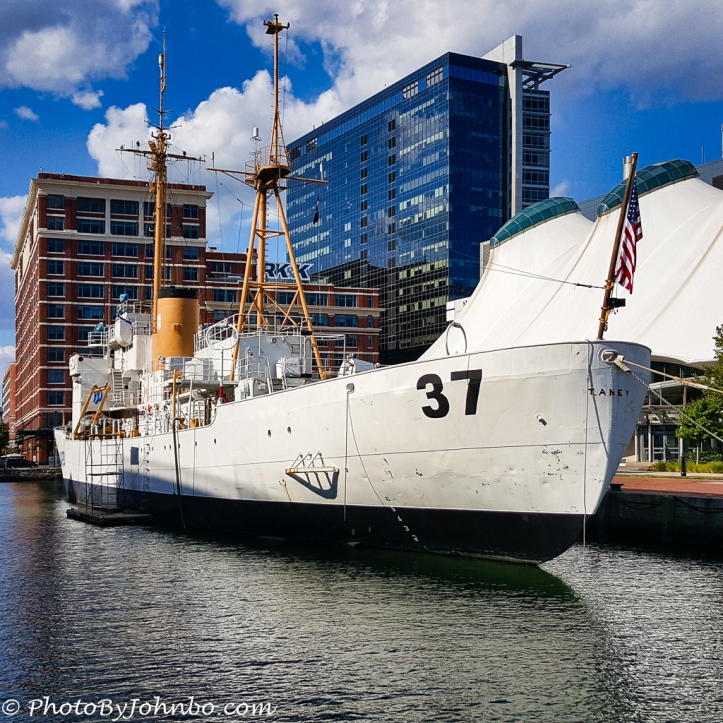 The last ship on our tour is the US Coast Guard Cutter Taney (WHEC-37). It holds the distinction of being the last floating warship that fought in the Pearl Harbor attack (stationed at the nearby Honolulu Harbor). Though the ship fought in both the Pacific and European theaters during World War II, she also was still under commission during the Vietnam War. The interior displays are of the ship’s later service years and presents the most “modern” view of life onboard than the other vessels which were clearly of an earlier time. More about the USCGC Taney can be found here.
The last ship on our tour is the US Coast Guard Cutter Taney (WHEC-37). It holds the distinction of being the last floating warship that fought in the Pearl Harbor attack (stationed at the nearby Honolulu Harbor). Though the ship fought in both the Pacific and European theaters during World War II, she also was still under commission during the Vietnam War. The interior displays are of the ship’s later service years and presents the most “modern” view of life onboard than the other vessels which were clearly of an earlier time. More about the USCGC Taney can be found here.
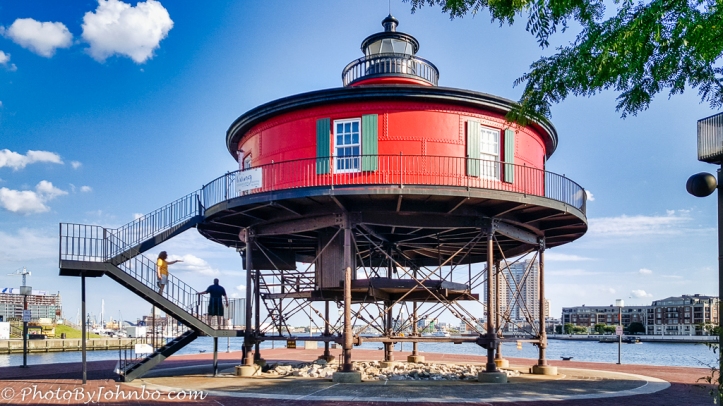 Admission to the ships also includes a pass to visit the Seven Foot Knoll Lighthouse which was moved from its original location on the Patapsco River to the inner harbor when it was replaced by an electronic navigational aid. Again, Wikipedia came to the rescue with a complete history of the facility here. Finally, for your amusement, I submit a gallery of the images above (along with a couple of extras) so that you may scroll through them enlarged (at least with most browsers.) Click on an image to enlarge it and to scroll through the gallery. If you have a mobile phone, don’t count on a better view… it depends upon the tool you use to read this humble post.
Admission to the ships also includes a pass to visit the Seven Foot Knoll Lighthouse which was moved from its original location on the Patapsco River to the inner harbor when it was replaced by an electronic navigational aid. Again, Wikipedia came to the rescue with a complete history of the facility here. Finally, for your amusement, I submit a gallery of the images above (along with a couple of extras) so that you may scroll through them enlarged (at least with most browsers.) Click on an image to enlarge it and to scroll through the gallery. If you have a mobile phone, don’t count on a better view… it depends upon the tool you use to read this humble post.














Nice pics, as always. Too bad most of Baltimore, my “home town,” is not anywhere near as nice as the Inner Harbor.
Thanks. I’ve heard “rumors” to that effect. My only experience is what I saw at the Inner Harbor. Always good to hear from you, my friend.
Many thanks to you, sir. I eagerly await our relocation to the desert, only hoping I haven’t spoiled our karma by “talking” about it so much.
Very nice Images of what’s there in the Inner Harbor. I was there years ago, and did find it a great place to visit. Did not go aboard the ships. Especially the sub. Too small for my 6’5″ frame. One of these day’s I’ll go see Ft. McHenry that is not far away.
I wish I had more time on my trip there. I would have taken the time to visit the fort if I could have.